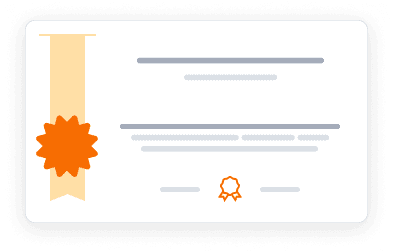This course is part of User Interface Design.
This comprehensive course teaches practical techniques for user research and early UI design exploration. Students learn various research methods including in-person research, surveys, and log analysis. The course covers how to analyze and present user research through personas, use cases, tasks, and scenarios. Students also learn ideation techniques that transform research insights into potential design solutions, making it essential for aspiring UX professionals.
4.6
(456 ratings)
26,642 already enrolled
Instructors:
English
پښتو, বাংলা, اردو, 3 more
What you'll learn
Conduct effective user research using multiple methods
Design and implement research protocols ethically
Analyze qualitative and quantitative user data
Create personas and use cases from research findings
Develop scenarios and task analyses
Generate and evaluate design ideas based on research
Skills you'll gain
This course includes:
4.2 Hours PreRecorded video
3 assignments
Access on Mobile, Tablet, Desktop
FullTime access
Shareable certificate
Closed caption
Get a Completion Certificate
Share your certificate with prospective employers and your professional network on LinkedIn.
Created by
Provided by

Top companies offer this course to their employees
Top companies provide this course to enhance their employees' skills, ensuring they excel in handling complex projects and drive organizational success.





There are 5 modules in this course
This course provides comprehensive coverage of user research methods and early UI design exploration techniques. Students learn practical approaches to conducting user research through various methods including interviews, observations, surveys, and log analysis. The curriculum emphasizes translating research findings into actionable design insights through personas, use cases, and scenarios, culminating in ideation and idea selection techniques.
Preface
Module 1 · 14 Minutes to complete
User Research Methods — Part 1
Module 2 · 1 Hours to complete
User Research Methods — Part 2
Module 3 · 2 Hours to complete
Analyzing and Delivering User Research
Module 4 · 1 Hours to complete
Ideation and Idea Selection
Module 5 · 2 Hours to complete
Fee Structure
Individual course purchase is not available - to enroll in this course with a certificate, you need to purchase the complete Professional Certificate Course. For enrollment and detailed fee structure, visit the following: User Interface Design
Instructors
Human-Computer Interaction Expert and Geographic Computing Specialist
Dr. Brent Hecht serves as Assistant Professor of Computer Science and Engineering at the University of Minnesota, focusing on the intersection of human-computer interaction, geography, and big data. His academic credentials include a Ph.D. in Computer Science from Northwestern University, an MS in Geography from UC Santa Barbara, and dual Bachelor's degrees in Computer Science and Geography from Macalester College. Through his Coursera courses "Evaluating User Interfaces," "Introduction to UI Design," and "User Research and Design," he helps students understand the principles of user interface design and evaluation. His research examines the relationship between big data and cultural factors, particularly focusing on volunteered geographic information and location-aware technologies. His collaborations with major tech companies including Google Research, Xerox PARC, and Microsoft Research demonstrate his influence in the field. His work has earned recognition at premier conferences in human-computer interaction and geography, including ACM CHI and COSIT, while receiving coverage in major media outlets including MIT Technology Review and New Scientist.
Professor of Computer Science at the University of Minnesota
Loren Terveen is a Professor of Computer Science at the University of Minnesota. Before joining the University of Minnesota, he received his PhD in Computer Sciences from the University of Texas at Austin, and then spent 11 years at AT&T Labs / Bell Labs. Terveen is an expert in the areas of human-computer interaction and social computing. He has published over 100 scientific papers, holds 9 patents, has advised several startup companies, consulted on intellectual property cases, and has held many leadership positions in his profession, including serving as President of ACM’s Special Interest Group on Computer-Human Interaction. Terveen's current areas of research emphasis are: peer production systems and the quantitative analysis of social media data. He has led projects that have: revealed new information about how valuable content is created on Wikipedia, produced and deployed new interface designs to enhance participation in online communities, developed a new location-based messaging system, combined wiki and geographical information systems technologies to create novel interfaces that let people enter and access information about places in their local communities, and created the first fully functional geographical wiki. In all his work, he seeks to use knowledge gained from empirical studies to build novel systems that solve real problems.
Testimonials
Testimonials and success stories are a testament to the quality of this program and its impact on your career and learning journey. Be the first to help others make an informed decision by sharing your review of the course.
Frequently asked questions
Below are some of the most commonly asked questions about this course. We aim to provide clear and concise answers to help you better understand the course content, structure, and any other relevant information. If you have any additional questions or if your question is not listed here, please don't hesitate to reach out to our support team for further assistance.





